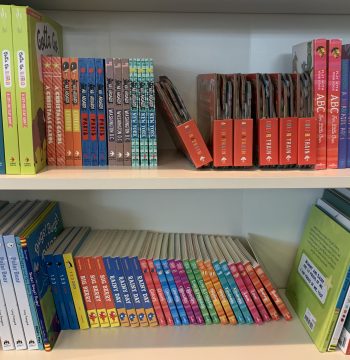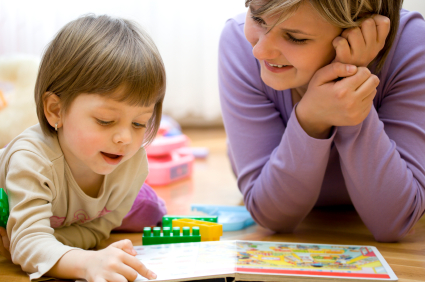5 Ways to Make Reading More Intentional in Your Family
Celebrate Read A Book Day by, well, Reading With Intention
National Read A Book Day is observed every September 6. At Babies in Bloom, we recognize the importance of reading all year long — especially with regard to babies and young children.

There’s tons of research and stats out there that support the life-long benefits reading has on our children. Rather than repeat all that for you, here are some tips to help you maximize all of reading’s positive impacts for your whole family.
Start Early
The first six years of your child’s life are the most important for their brain development. The benefits reading has on both you and your child emotionally and cognitively begin as early as pregnancy! While reading to your belly will look different than reading to a two-year-old, reading aloud is a practice that requires…practice. If your baby is used to listening to you read from Day 1, it will become as normal an activity as eating and diaper changes.
Reading early on is especially beneficial for new moms. In fact, a recent study of moms with babies in the NICU found that reading to their babies over a four-week period for at least 30 minutes a day, three days a week, showed “reduced moms’ rates of postpartum depression and stress, improved their perceived ability to bond with their children, and increased the infants’ blood-oxygen saturation during reading sessions and in the 30 minutes after.” Since approximately 40% of moms with babies in the NICU experience postpartum depression, these findings are especially impactful!
Reading can also help new parents bond and communicate with their newborns, who can’t quite yet reciprocate in the communication department. Remember, you won’t have a stationary captive audience for too much longer, so take advantage of the fact that your baby is stuck with you and let your storytelling flag fly!
Slow Down
Baby books are especially short. Some have as little as one word per page. Most aren’t exactly riveting fiction. It might be a little hard to dig deep enough to feel the same excitement your baby might experience looking at the picture book. We want to encourage you to try to catch yourself in these moments, resist the urge to just get through the book, and slow down. These books provide a great opportunity for you to ad lib, to talk about the colors and shapes on the pages, to communicate more details to your child.
This can become even more fun for you than reading a more elaborate story. You might even rediscover your imagination and passion for making up your own stories.
It’s Okay to Have a Favorite
If reading to your child isn’t a new activity, there’s a good chance you have a book or two you’re SO over. It’s also probably the same book your child LOVES to read over and over again! Resist the urge to hide the book under the bed.
We’ve got some science to help you tolerate reading Bugs! Bugs! Bugs! for the fifth time in a row — by continuing to read your child their favorite book, you’re helping prepare them for academic success and test taking. Why, you might ask? Because the repetition of vocabulary helps develop and strengthen their comprehension skills.
Bring in the Senses and Theatrics
Reading stories aloud to your children is great. For parents of very small children, it reminds you to regularly talk to your tiny baby even when they can’t yet respond back. But it’s also important to remember that we have four other senses — some of which we can include in the act of storytelling.
Speaking of act, you can also relive your theater days (or fantasies) and act out what is happening in the story, make animal and car sounds, change the tone of your voice for the different characters, stomp when the dinosaur stomps. Point out what you see in the pictures and if you’ve got a touch-incorporated book, talk about the different textures you experience together.
One reason our childhood is such a magical time is because of how vibrant our imaginations are. It is in our early years that we are most open and eager to believe and embrace all the beautiful senses in our world. But, it also takes practice, repetition, and exercising our brain (maybe our most important muscle) to keep it alive. Help spark imagination and creativity early by showing your child how to read this way.
Make Reading a Ritual
There will likely come a time when reading is not so fun for your child. They will need to read a required book for school and are dreading the report that follows. This is where perseverance and routine come in. One way you can help establish this is by making reading as normal and ritualistic in your household as brushing your teeth or blowing out candles on your birthday.
Adding reading to your child’s bedtime routine will also help make bedtime something your child looks forward to. Going to the library every couple weeks helps teach your child how to pick out books they like, and gives them an outing to get excited about. Not to mention — they learn about responsibility because they have to take care of the book and turn it back in by the due date.






